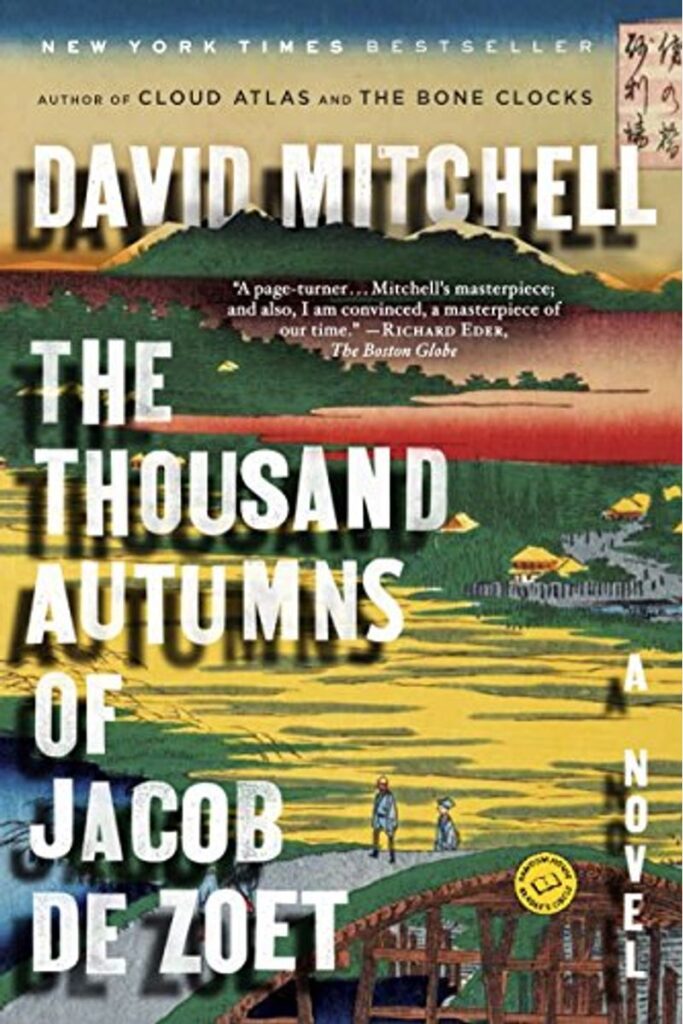
Even halfway through this 479-page novel about Dutch traders in early 19th-century Japan, I was still thinking of giving up on it. The first chapter was a nightmare to read and I had to squeamishly skim it; there were plenty of other pages that made me grimace with disgust; and in particular, one of the most important plot points was truly horrible. How on earth, then, could this possibly turn into a five-star read, by an author whose other books I want to read as soon as possible?
Mitchell did it by writing a complex, literary book that yet falls firmly in the category of “ripping yarn.” Those last 200 pages turned themselves over so quickly. The book was extremely well plotted – just one of several aspects that made reading it feel at times like watching a really good magic show. I couldn’t wait to see what Mitchell would pull out of his top hat in the next chapter, and the next, and the next.
The characters were real people, except for the monstrous super-villain, and the hope that he would get his comeuppance was one of the main things that made it so propulsive. There were so many interesting cross-cultural moments, and intricate historical detail that nevertheless never added up to that tiresome experience of watching an author try to shoehorn in all his research so none of it would go to waste. It certainly made me want to read more about Japan, particularly during this time period. This 2020 Baillie Gifford shortlisted book tells the life story of a Japanese woman born a few years before the denouement of Jacob de Zoet, and might be an interesting place to start.
I read that Mitchell wanted to “write a bicultural novel, where Japanese perspectives are given an equal weight to Dutch/European perspectives.” There were moments when I thought he wasn’t going to manage this, but in the end, I think he did. It was so interesting to read about the issues of translation between the two cultures, both literally between the two languages and metaphorically. At one point the main character asks his Japanese interlocutor in the midst of a fraught interchange, “What do I not understand?” That sort of open-handed approach to conversation, and willingness to be instructed as needed, apply beyond cross-cultural interchanges, too.
The first half of the book had plenty to recommend it too, even though the second half was what really convinced me. The trading was really interesting in itself, and you feel really invested in questions like “What’s going to happen about the copper?” And I did understand that the sometimes graceless scatological language served a purpose, situating the reader in a particular time and place when things like a high level of sanitation, or not having lice, were unrealistic for Dutch or English sailors. All in all the book’s good points far outweighed the things that made it challenging reading for me in places, and I would highly recommend it, even to readers who don’t always enjoy historical fiction or who are on the squeamish side like I am. I’ve never read anything quite like it and if I had to pick a comparison, it would actually be The Long Ships by Frans G. Bengtsson (1941). Both books are pacey, adventure-filled historical novels that create another time and place with extraordinary effectiveness, and then people that time and place with a large cast of fascinating characters. I plan to read Cloud Atlas soon and am eager to learn more about David Mitchell’s writing.
